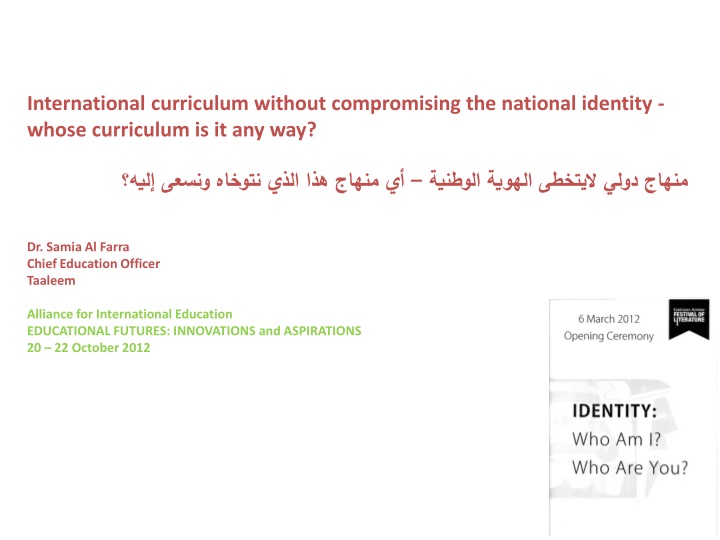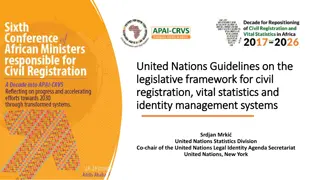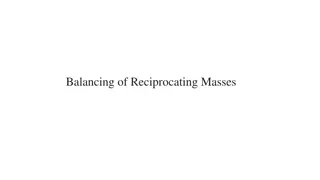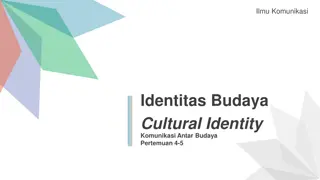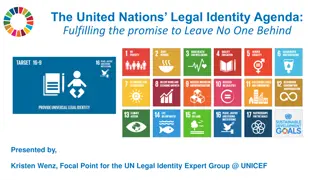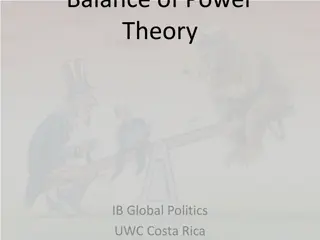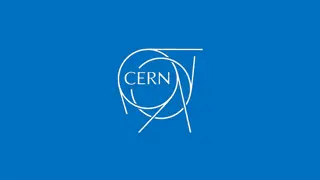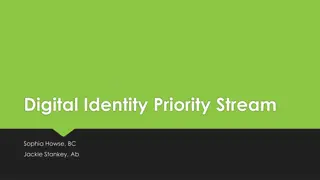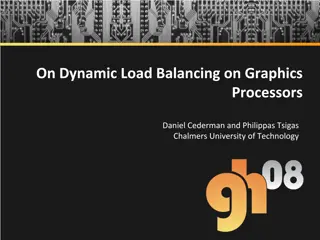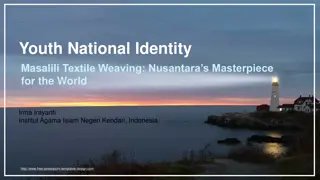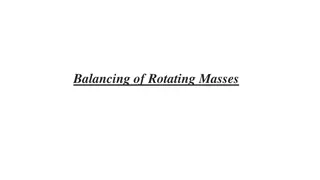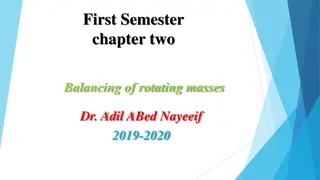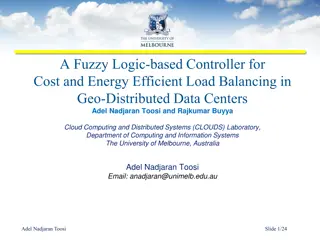International Education: Balancing National Identity
International schools play a vital role in education, focusing on international mindedness while preserving national identity. Explore the significance of multicultural curriculum, language acquisition, and parental involvement in maintaining cultural heritage within the Gulf Cooperation Council (GCC) region. Discover the growth trends in private schools and the opportunities they offer.
Download Presentation

Please find below an Image/Link to download the presentation.
The content on the website is provided AS IS for your information and personal use only. It may not be sold, licensed, or shared on other websites without obtaining consent from the author.If you encounter any issues during the download, it is possible that the publisher has removed the file from their server.
You are allowed to download the files provided on this website for personal or commercial use, subject to the condition that they are used lawfully. All files are the property of their respective owners.
The content on the website is provided AS IS for your information and personal use only. It may not be sold, licensed, or shared on other websites without obtaining consent from the author.
E N D
Presentation Transcript
International curriculum without compromising the national identity - whose curriculum is it any way? Dr. Samia Al Farra Chief Education Officer Taaleem Alliance for International Education EDUCATIONAL FUTURES: INNOVATIONS and ASPIRATIONS 20 22 October 2012
Introduction The importance of international education in this era. Quality and quantity. Definitions: International education and international schools - international mindedness International schools curriculum in the Gulf Cooperation Council GCC -Taaleem schools in Dubai and Abu Dhabi as case studies. Definition Subjects taught The language of instruction Teachers training leadership and governance Student body composition The media and the external environment Islam and international education - International Education from an Islamic perspective. " " . The importance of mother tongue language acquisition at early ages. The role of parents, of the school, of media, society and the responsibility towards SN students. Definition of: Bilingual, Semi-lingual, Equilingual / Ambilingual and Monolingual. How can one ensure that our students are firmly rooted in their culture and heritage? Conclusion
International schools bring joy to students. They are colorful, relevant, active & engaging
International schools bring joy to students. They are colorful, relevant, active & engaging
International schools bring joy to students. They are colorful, relevant, active & engaging
Why did the private schools market grow at an unprecedented rate in the Gulf over the last 10 years? Demographic growth A flight to quality A greater willingness among GCC parents to pay for education All the above will drive growth in the private-school market over the coming decade, and lead to a transformation in education throughout the region. This evolution will offer sizable growth opportunities for operators and investors in short, the field is wide open for companies that can navigate several challenges in the region to capitalize on its superior growth opportunities . Booz & Company
UAE (Abu Dhabi) Current Overview Abu Dhabi currently has a combined enrollment of roughly 300,000 students, across 266 public and 179 private schools in the emirate s three regions1. The private-school market size is estimated at roughly $550 million, based on current tuition fee levels and student numbers. ABU DHABI: K 12 Education system overview Public Schools Private Schools Schools 266 Schools 179 Schools Student to Teacher Ratio: 10.6 Student to Teacher Ratio: 17.7 Students 128,000 Students 177,000 Students Teachers 12,000 Teachers 10,000 Teachers US$2 Billion2 ( US$15,700/Student) US$550 Million3 ( US$3,100/Student) OpEx 1 Abu Dhabi Central Capital District, Al Ain (Eastern Region), Al Gharbia (Western Region) 2 Direct public spend on public institutions, excluding capital; based on publicly stated teacher staffing levels and advertised teacher salaries. 3 Tuition fees only, excludes transport and other fees. Source: Abu Dhabi Education Council; Booz & Company analysis
UAE (Dubai) Current Overview Dubai is the most advanced private-school market in the GCC. The private-school market is significantly larger than the public-school market: Dubai has 146 private schools, with more than 191,000 students and 12,000 teachers, compared to 78 public schools with about 27,000 students and 2,300 teachers. Dubai: K 12 Education system overview Public Schools Private Schools Schools 78 Schools 146 Schools Student to Teacher Ratio: 11.5 Student to Teacher Ratio: 16 Students 27,000 Students 191,000 Students Teachers 2,300 Teachers 12,000 Teachers US$ 400 Million1 ( US$15,700/Student) OpEx US$840 Million ( US$4,400/Student) 1 Direct public spend on public institutions, excluding capital; based on publicly stated teacher staffing levels and advertised teacher salaries. Source: Dubai Statistical Yearbook; Booz & Company analysis
The importance of international education in this era. Quality and quantity International education: International schools: International mindedness: Review all Jeff Thompson and Mary Hayden s work
International schools curriculum in the Gulf Cooperation Council GCC - Dubai as a case. Definition Subjects taught Teachers profile The language of instruction Teachers training Leadership and governance Student body composition The external environment and the local language enhancement
Islam and international education INTERNATIONAL EDUCATION FROM AN ISLAMIC PERSPECTIVE
The importance of language acquisition at an early ages. The role of parents, of the school, of media, society and the responsibility towards SN students. What is a bilingual education? Bilingual: Using or able to use two languages, especially with equal or nearly equal fluency / a person who speaks two languages fluently Semilingual: A person who has partial or incomplete working knowledge of a language or languages Equilingual / Ambilingual: A person who is a native speaker of two languages, and or if his mastery of both languages is equalpartial or incomplete working knowledge of a language or languages Monolingual: a person who knows only one language. Retrieved from www.thefreedictionary.com
What can we do to ensure that students are firmly rooted in their culture and heritage?
Mission statement/Guiding principles and general goals IB schools in Dubai as models ABS Bilingual model in Jordan Al Bayan bilingual school model- Kuwait Al Ruy ya bilingual school model and Al Hayat bilingual school models-Kuwait
Conclusion International schools are important institutions for improving cross-cultural understanding, combating ignorance and bringing people from different backgrounds together. Their adoption of high standards usually facilitates the development of important skills for the 21st century. There is an urgent need to develop a semi- balanced (40%-60%) bilingual (Arabic/English) model in the private and public system of schools and universities which will use a new curriculum alongside compulsory and continuous training for teachers. English should never dominate Arabic instruction time for Emirati and Arab students. Education in the GCC should stress on creating individual students who are: Inquirers, knowledgeable, thinkers, communicators, principled, open-minded, caring, courageous, balanced, reflective, and spiritual. Any curriculum draft should stem from the Mission and Philosophy of Education in the GCC while bringing an international dimension to it always. Not all students are capable of joining university and thus we need to have vocational streams in our national strategic plans such as IBCC
References Alpen Capital Investment Banking. GCC Education Industry. June 20, 2012. Booz & Co., A Decade of Opportunity. The Coming Expansion of the Private School Market in GCC., 2011. Ellwood, C., Learning and Teaching about Islam: Essays in Understanding. Al Farra, S. Internationalism and the Arab Heritage: A practitioner s experience in International schools. A John Catt Publication., June, 2012 Thompson, J., Hayden, M., International Schools, International Education: improving teaching, management and quality., edited by Mary Hayden & Jeff Thompson. Chapter by Al Farra, S., London: Kogan Page, 2000. Al Farra,S., Education in the UAE, A vision for the Future., Education in the UAE, current status and future developments. ECSSR, 2011 Definitions retrieved from www.thefreedictionary.com, October 14, 2012
